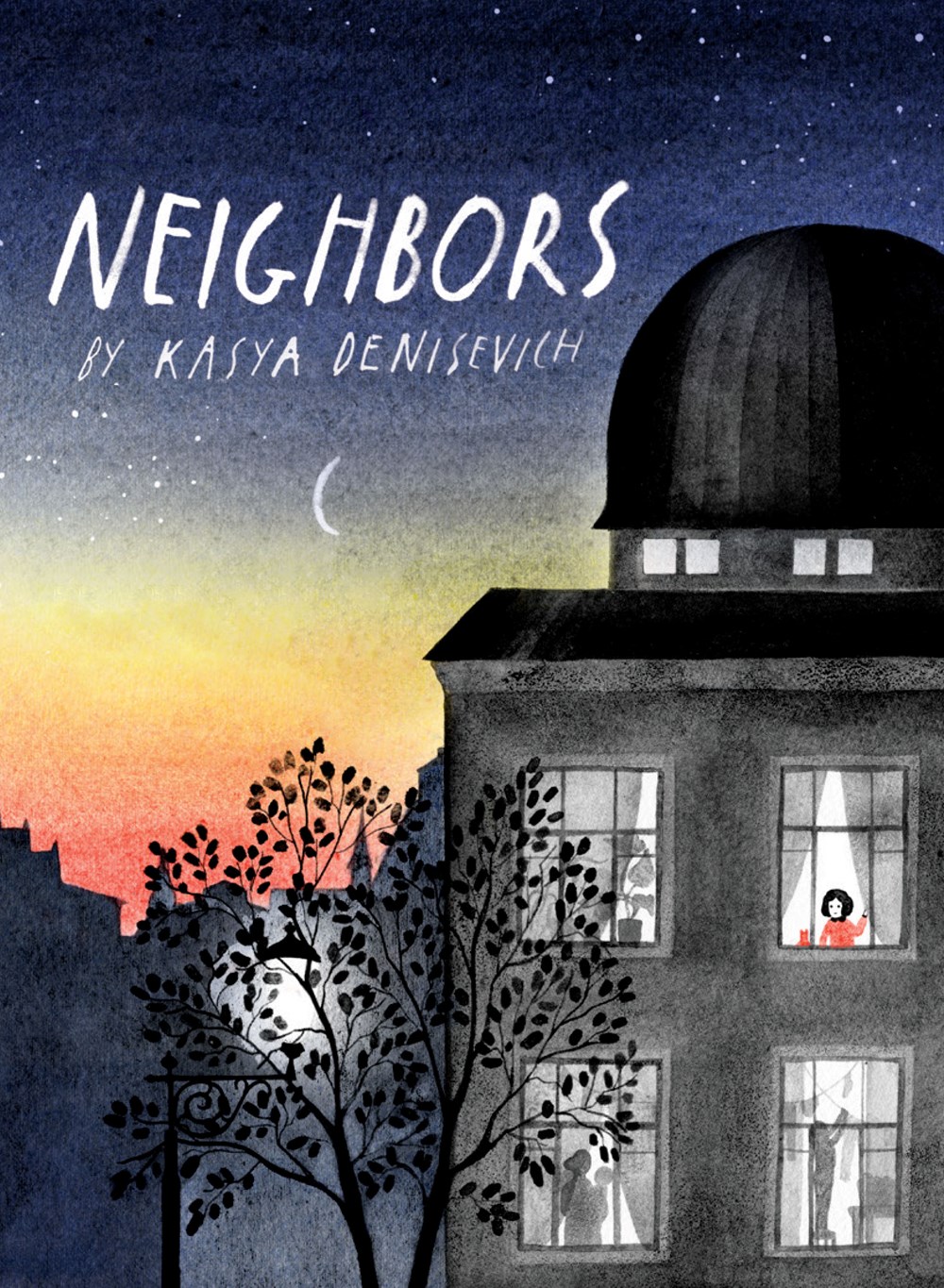Tips for Teachers is a monthly column in which experienced teacher and children’s librarian Emmie Stuart shares book recommendations and a corresponding teaching guide for fellow elementary school teachers.
The books we read in childhood hold immense power. True, many will be forgotten, but some stay lodged in the heart and forever influence the way we see the world, even as we grow into adulthood. In the words of You’ve Got Mail’s Kathleen Kelly (a character created by the inimitable screenwriters Nora and Delia Ephron), “When you read a book as a child, it becomes a part of your identity in a way that no other reading in your whole life does.”
Four childhood books that formed my identity are Emily Arnold McCully’s Mirette on the High Wire, Charlotte Zolotow and James Stevenson’s I Know a Lady, Michael Bedard and Barbara Cooney’s Emily and Cynthia Rylant and Kathryn Brown’s The Old Lady Who Named Things. Each of them extended my understanding of childhood friendship by helping me see that I could be friends with a talented acrobat, the elderly lady next door, a community eccentric or the dog down the street.
Unexpected and unconventional friendships are also at the heart of the three picture books below. Through words and pictures, they tell stories that show children the daily joys and comfortable companionship of serendipitous friendships.
 Starcrossed
Starcrossed
by Julia Denos
Eridani is a human girl “made of blood and bones.” Her best friend Acamar is “more of a constellation than a boy . . . made of space and stars.” Every evening, the two friends share their longings and questions with each other. Eridani wonders about comets and flying while Acamar wonders about sunsets and sand. Curiosity sparked, they make wishes upon each other and embark on an altogether magical experience. Alight with warmth and wonder, Starcrossed is a story of intergalactic friendship and cosmic wishes. An author’s note in which Julia Denos explains that Acamar is an actual star within the constellation Eridanus is sure to delight students.
- Stories behind the stars
Read the author’s note aloud, then show students photographs of Eridanus and the star Acamar. Explore the scientific story of the stars, then explore the connections between constellations and mythology.
- Night sky art
Denos’s full-bleed watercolor, ink, pencil and digital collage illustrations capture stunning nightscapes that set off luminous constellations that explode with astronomical energy. Give students an opportunity to emulate Denos’s striking night skies with a resistance watercolor exploration. Watercolor sets or liquid watercolors work best for this activity.
Provide students with watercolor paper, white crayons or oil pastels and various star-shaped and round stickers. The inexpensive foil star stickers and punch-hole reinforcements I bought at a local office supply store worked wonderfully.
Using the crayons and stickers, ask students to create constellations or a starry design on the watercolor paper. Then show them how to use a foam brush or thick watercolor paintbrush to paint over their design in shades of blue, green and purple. Incorporate color theory by telling students how to mix colors to create different shades, as well as how to control color intensity by using water.
After the paint is dry and the stickers are peeled off, the constellation designs will pop against the darker watercolor skies.
- World-crossed reflection
Eridani and Acamar dream of a life far different from their own. Ask students to think of a place, anywhere on Earth, that fascinates them. Provide atlases and other books with strong photographs as well as geographical and cultural information, or use Google Earth to show unique places around the world. Once students have decided on their world-crossed location, give them time to research it further.
Next, invite them to create a dialogue that resembles the conversation Eridani and Acamar share. What would they tell a friend about their current home? What do they most want to experience about their world-crossed location?
 Neighbors
Neighbors
by Kasya Denisevich
“I know my new address by heart,” explains a little girl who has just moved to a new apartment building in the heart of a big city. Excited about her new room, she reflects, “My ceiling is someone’s floor and my floor is someone’s ceiling.” As she continues to muse about her new surroundings, the black and white illustrations shift to a cutaway view of the apartment building that reveals its tenants engaged in their daily various activities. The little girl’s thoughts head in a philosophical direction, until she finally wonders, “Do they even exist? Or maybe my building is my only neighbor. What if there is nothing at all beyond the walls of my room?” The next morning, another little girl emerges from the apartment next door. As the pair head to school, color floods the black and white illustrations, signaling the hope of new friendship. Many children will see their own thoughts and questions reflected in the little girl’s honest ponderings of the public-private dichotomy that’s part of life in a big city.
- Reminders of home
As soon as the little girl moves into her new apartment, she begins unpacking her special objects. Show students some personal items that make your classroom or house feel like home for you. Give time students time to reflect on some objects or nontangible things (for example, a particular scent, or a type of music) that make a place feel like “home” for them.
Lead a discussion to help students understand that these things can be comforting when they find themselves in a new place. Invite students to bring one of their “home objects” to share with the rest of the class. This reflection exercise will be particularly helpful for children who struggle with homesickness when they are away from home.
- Cutaway comparison
Neighbors includes three double-page cutaway illustrations of the apartment building. Define “cutaway” for students and show them a few cutaways from other books. Lead them in a discussion about the purpose of these type of illustrations, then compare Neighbors’ first two cutaways illustrations. The first shows the apartment building’s residents in their various routines. The second reimagines the neighbors as storybook characters, woodland creatures or fantastical entities. The comparison will delight students. If it’s not possible for the illustrations to be enlarged or shown on a projector, create a small center in the classroom and let students study the illustrations up close.
- Address addresses
The book’s opening lines—"I know my new address by heart: 3 Ponds Lane, Building 2, Apartment 12”—are not as simple as they might initially seem. Last fall, one of our school’s buses broke down at the beginning of its afternoon route. A new bus had to come pick up the students and take them home. A few of us went to go help with the details of the transition. I was shocked to discover that most of the students did not know their home addresses!
On a Monday, announce a class address challenge. Give each student an index card with their name and full address. Provide younger children with multiple opportunities to practice reciting their address throughout the day. Older children can practice writing their address. At the end of the week, celebrate the students who have memorized their address.
 Nothing in Common
Nothing in Common
by Kate Hoefler,
illustrated by Corinna Luyken
Two children live in adjoining apartment buildings, but each assumes they have “nothing in common,” so they never acknowledge each other. However, they both love watching an elderly man play with his dog. When the dog goes missing, the two neighbors are pulled out of their solitude and united in their quest to help find the dog. Finding much more than the dog, the two children discover that they share more than just an apartment view. The search for a beloved pet will resonate with children, as will the warm reminder that reaching out can be hard, but often results in genuine connection.
- New window views
The two children live in different buildings, but when they look out their windows, they share a similar view. Show students a glimpse of what people around the world see when they look out their window by visiting the website Window Swap. It’s a simple platform that lets viewers peek out windows around the world. Each view is a small video with the name of the window’s owner in the top left-hand corner and their location in the top right-hand corner.
- Finding common ground
So often children (and adults) gravitate to children who are most like them. They quickly become friends with those who share the same interests and temperament. Before class, purposefully pair students who are not friends with each other. Give them 10 to 15 minutes to talk to each other, then ask them to write down a list of their similarities. For the next few weeks, let these pairings work together for other classroom activities. Students will discover that working together on a common goal can create a unique bond and an unexpected friendship.








